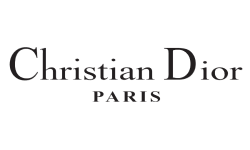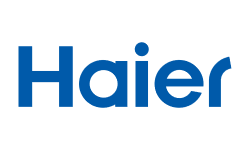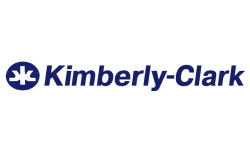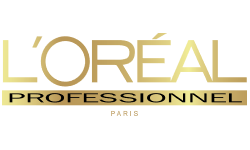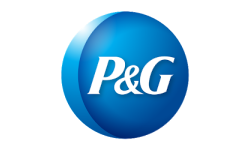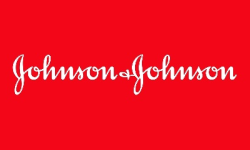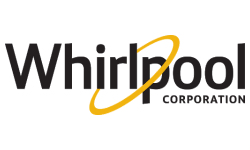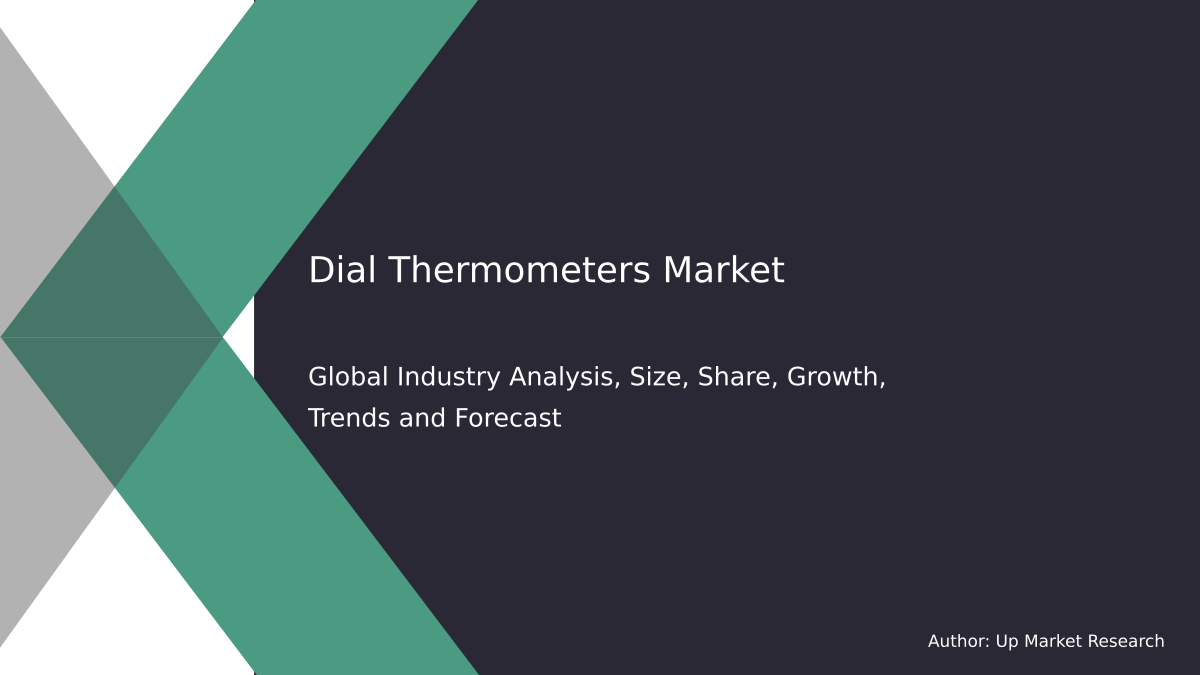
Global Personal Hygiene Products Market by Type (Soap, Anti-Perspirants & Deodorants, Bath & Shower Products), By Application (Online, Offline) and Region (North America, Latin America, Europe, Asia Pacific and Middle East & Africa), Forecast To 2028
The Global Personal Hygiene Product Market size is expected to reach USD 341.4 billion by 2028, growing at a CAGR of 4.1% during the forecast period. Increasing demand for hygienic and fresh living conditions is anticipated to drive the growth of the market over the forecast period. The demand for more environmentally-friendly ingredients in this industry will drive manufacturers towards research on developing low environmental impact versions that are also safe and effective. On the other hand; factors such as increased competition from substitutes priced comparatively cheaper than these products have negatively affected revenue generation opportunities for manufacturers.
A Personal Hygiene Product is a cosmetic or cleaning product that has as its primary function to improve the quality of your skin and/or hair, by reducing odor, removing sweat, dirt, or other substances from your body. Personal Hygiene Products are necessary for maintaining healthy living standards and preventing diseases caused due to uncleanliness. The major types of these products are soaps, antiperspirants & deodorants, bath & shower products. Applications include online stores like Amazon while offline outlets including drugstores and grocery chains sell them in their shops too.
On the basis of Type, the market is segmented into Soap, Anti-Perspirants & Deodorants, and Bath & Shower Products. The global value of the soaps industry was pegged at USD 102 billion in 2018. Considering that there are growing concerns about environmental sustainability, this product category is expected to grow at a CAGR of over five percent from 2019 through 2024. On the other hand, the demand for antiperspirant and deodorant will increase owing to rising awareness among consumers on health issues such as allergies induced by chemicals found in traditional products. It has been observed that developing countries are showing strong growth prospects due to increasing disposable incomes and evolving lifestyles with an emphasis on beauty care practices.
Soap:
Soap is a personal hygiene product that removes soil or impurities from the skin. It can be in the form of bar soap, liquid soap, gel and cream soap as well as shampoo bars for cleaning hair. Soaps are also used to clean clothes before they are washed and to wash dishes after eating food.
Anti-Perspirants & Deodorants:
Anti-perspirant/deodorants are used to reduce the level of perspiration and odor, respectively. The market is driven by increasing consumer awareness about health risks associated with excessive sweating due to obesity or too much physical activity such as strain on joints etc.
The Anti-Perspirants & Deodorants market can be divided into deodorant and antiperspirant. The most commonly found formulations are aluminum salts such as zirconium chlorohydrate (ZC). ZC has a higher degree of efficacy than other chemistries used in antiperspirants due to its better skin adhesion properties with less irritation. Higher sweat production due to obesity or too much physical activity drives the growth of this segment further.
Bath & Shower Products:
The Bath & Shower Products market can be broadly classified into soaps, shower gels, and shampoos in personal hygiene products. Soap is a cleansing agent made of either animal or vegetable fats (tallow) combined with an alkali to form soap lathers which removes dirt, oil, and sweat from the skin. The use of bath and shower products for cleansing purposes has remained constant over the past few years because there have been no significant shifts in consumer behavior that could affect this segment.
On the basis of Application, the market is segmented into Online and Offline. The online segment has the highest market share in this category with 67% of total revenue because it is easier to make purchases from home than go out shopping for the products.
On the basis of Region, the market is segmented into North America, Latin America, Europe, Asia Pacific and Middle East & Africa. The North American market is the leading region in terms of revenue owing to high disposable incomes and increasing personal care product consumption. The Latin America and Europe regions are also contributing significantly with their increased demand for products, especially from up-scale customers.
The Asia Pacific has emerged as one of the fastest-growing markets owing to improved economic conditions, rising population base, changing consumer lifestyles, and easy access to new technologies that may help these markets grow at a faster pace than other emerging economies. The Middle East & Africa region has emerged as an emerging destination, owing to increased awareness about healthier lifestyles coupled with rising disposable incomes and expanding urban populations.
Personal Hygiene Products Market - Drivers & Restraints:
Higher disposable income coupled with changing lifestyles led to the higher penetration rate of these products. On the other hand, issues related to sustainability have been hampering this segment due to increasing pollution levels globally. Moreover, the lack of awareness among the rural population about such products has also acted as an impediment to growth. Likewise; high competition from substitutes like laundry detergents that are comparatively cheaper than these products has caused a negative impact on revenue generation opportunities for manufacturers in recent years. In addition; reduced raw materials availability has led to the higher prices of these products.
Up Market Research published a new report titled “Personal Hygiene Products Market research report which is segmented by Types (Soap, Anti-Perspirants & Deodorants, Bath & Shower Products), By Applications (Online, Offline), By Players/Companies Unilever, Johnson & Johnson, Carrefour, Reckitt Benckiser Group, Auchan, Publix, Costco, Helen of Troy, Proctor & Gamble Company, Kroger, Colgate-Palmolive Company”.
Report Scope
| Report Attributes | Report Details |
| Report Title | Personal Hygiene Products Market Research Report |
| By Type | Soap, Anti-Perspirants & Deodorants, Bath & Shower Products |
| By Application | Online, Offline |
| By Companies | Unilever, Johnson & Johnson, Carrefour, Reckitt Benckiser Group, Auchan, Publix, Costco, Helen of Troy, Proctor & Gamble Company, Kroger, Colgate-Palmolive Company |
| Regions Covered | North America, Europe, APAC, Latin America, MEA |
| Base Year | 2020 |
| Historical Year | 2018 to 2019 (Data from 2010 can be provided as per availability) |
| Forecast Year | 2028 |
| Number of Pages | 220 |
| Number of Tables & Figures | 154 |
| Customization Available | Yes, the report can be customized as per your need. |
The report covers comprehensive data on emerging trends, market drivers, growth opportunities, and restraints that can change the market dynamics of the industry. It provides an in-depth analysis of the market segments which include products, applications, and competitor analysis.

Global Personal Hygiene Products Market Report Segments:
The market is segmented by Type Soap, Anti-Perspirants & Deodorants, Bath & Shower Products and By Application Online, Offline.
Some of the companies that are profiled in this report are:
- Unilever
- Johnson & Johnson
- Carrefour
- Reckitt Benckiser Group
- Auchan
- Publix
- Costco
- Helen of Troy
- Proctor & Gamble Company
- Kroger
- Colgate-Palmolive Company
Personal Hygiene Products Market research report delivers a close watch on leading competitors with strategic analysis, micro and macro market trend and scenarios, pricing analysis and a holistic overview of the market situations in the forecast period. It is a professional and a detailed report focusing on primary and secondary drivers, market share, leading segments and geographical analysis. Further, key players, major collaborations, merger & acquisitions along with trending innovation and business policies are reviewed in the report.
Key Benefits for Industry Participants & Stakeholders:
- Industry drivers, restraints, and opportunities covered in the study
- Neutral perspective on the market performance
- Recent industry trends and developments
- Competitive landscape & strategies of key players
- Potential & niche segments and regions exhibiting promising growth covered
- Historical, current, and projected market size, in terms of value
- In-depth analysis of the Personal Hygiene Products Market
Overview of the regional outlook of the Personal Hygiene Products Market:
Based on region, the market is segmented into North America, Europe, Asia Pacific, Latin America and Middle East & Africa (MEA). North America region is further bifurcated into countries such as U.S., and Canada. The Europe region is further categorized into U.K., France, Germany, Italy, Spain, Russia, and Rest of Europe. Asia Pacific is further segmented into China, Japan, South Korea, India, Australia, South East Asia, and Rest of Asia Pacific. Latin America region is further segmented into Brazil, Mexico, and Rest of Latin America, and the MEA region is further divided into GCC, Turkey, South Africa, and Rest of MEA.

Highlights of The Personal Hygiene Products Market Report:
- The market structure and projections for the coming years.
- Drivers, restraints, opportunities, and current trends of Personal Hygiene Products Market.
- Historical data and forecast.
- Estimations for the forecast period 2028.
- Developments and trends in the market.
- By Type:
1. Soap
2. Anti-Perspirants & Deodorants
3. Bath & Shower Products
7. By Application:1. Online
2. Offline
- Market scenario by region, sub-region, and country.
- Market share of the market players, company profiles, product specifications, SWOT analysis, and competitive landscape.
- Analysis regarding upstream raw materials, downstream demand, and current market dynamics.
- Government Policies, Macro & Micro economic factors are also included in the report.
We have studied the Personal Hygiene Products Market in 360 degrees via. both primary & secondary research methodologies. This helped us in building an understanding of the current market dynamics, supply-demand gap, pricing trends, product preferences, consumer patterns & so on. The findings were further validated through primary research with industry experts & opinion leaders across countries. The data is further compiled & validated through various market estimation & data validation methodologies. Further, we also have our in-house data forecasting model to predict market growth up to 2028.
How you may use our products:
- Correctly Positioning New Products
- Market Entry Strategies
- Business Expansion Strategies
- Consumer Insights
- Understanding Competition Scenario
- Product & Brand Management
- Channel & Customer Management
- Identifying Appropriate Advertising Appeals

Reasons to Purchase the Personal Hygiene Products Market Report:
- The report includes a plethora of information such as market dynamics scenario and opportunities during the forecast period
- Segments and sub-segments include quantitative, qualitative, value (USD Million,) and volume (Units Million) data.
- Regional, sub-regional, and country level data includes the demand and supply forces along with their influence on the market.
- The competitive landscape comprises share of key players, new developments, and strategies in the last three years.
- Comprehensive companies offering products, relevant financial information, recent developments, SWOT analysis, and strategies by these players.
Chapter 2 Assumptions and Acronyms Used
Chapter 3 Research Methodology
Chapter 4 Personal Hygiene Products Market Overview
4.1 Introduction
4.1.1 Market Taxonomy
4.1.2 Market Definition
4.1.3 Macro-Economic Factors Impacting the Market Growth
4.2 Personal Hygiene Products Market Dynamics
4.2.1 Market Drivers
4.2.2 Market Restraints
4.2.3 Market Opportunity
4.3 Personal Hygiene Products Market - Supply Chain Analysis
4.3.1 List of Key Suppliers
4.3.2 List of Key Distributors
4.3.3 List of Key Consumers
4.4 Key Forces Shaping the Personal Hygiene Products Market
4.4.1 Bargaining Power of Suppliers
4.4.2 Bargaining Power of Buyers
4.4.3 Threat of Substitution
4.4.4 Threat of New Entrants
4.4.5 Competitive Rivalry
4.5 Global Personal Hygiene Products Market Size & Forecast, 2018-2028
4.5.1 Personal Hygiene Products Market Size and Y-o-Y Growth
4.5.2 Personal Hygiene Products Market Absolute $ Opportunity
Chapter 5 Global Personal Hygiene Products Market Analysis and Forecast by Type
5.1 Introduction
5.1.1 Key Market Trends & Growth Opportunities by Type
5.1.2 Basis Point Share (BPS) Analysis by Type
5.1.3 Absolute $ Opportunity Assessment by Type
5.2 Personal Hygiene Products Market Size Forecast by Type
5.2.1 Soap
5.2.2 Anti-Perspirants & Deodorants
5.2.3 Bath & Shower Products
5.3 Market Attractiveness Analysis by Type
Chapter 6 Global Personal Hygiene Products Market Analysis and Forecast by Applications
6.1 Introduction
6.1.1 Key Market Trends & Growth Opportunities by Applications
6.1.2 Basis Point Share (BPS) Analysis by Applications
6.1.3 Absolute $ Opportunity Assessment by Applications
6.2 Personal Hygiene Products Market Size Forecast by Applications
6.2.1 Online
6.2.2 Offline
6.3 Market Attractiveness Analysis by Applications
Chapter 7 Global Personal Hygiene Products Market Analysis and Forecast by Region
7.1 Introduction
7.1.1 Key Market Trends & Growth Opportunities by Region
7.1.2 Basis Point Share (BPS) Analysis by Region
7.1.3 Absolute $ Opportunity Assessment by Region
7.2 Personal Hygiene Products Market Size Forecast by Region
7.2.1 North America
7.2.2 Europe
7.2.3 Asia Pacific
7.2.4 Latin America
7.2.5 Middle East & Africa (MEA)
7.3 Market Attractiveness Analysis by Region
Chapter 8 Coronavirus Disease (COVID-19) Impact
8.1 Introduction
8.2 Current & Future Impact Analysis
8.3 Economic Impact Analysis
8.4 Government Policies
8.5 Investment Scenario
Chapter 9 North America Personal Hygiene Products Analysis and Forecast
9.1 Introduction
9.2 North America Personal Hygiene Products Market Size Forecast by Country
9.2.1 U.S.
9.2.2 Canada
9.3 Basis Point Share (BPS) Analysis by Country
9.4 Absolute $ Opportunity Assessment by Country
9.5 Market Attractiveness Analysis by Country
9.6 North America Personal Hygiene Products Market Size Forecast by Type
9.6.1 Soap
9.6.2 Anti-Perspirants & Deodorants
9.6.3 Bath & Shower Products
9.7 Basis Point Share (BPS) Analysis by Type
9.8 Absolute $ Opportunity Assessment by Type
9.9 Market Attractiveness Analysis by Type
9.10 North America Personal Hygiene Products Market Size Forecast by Applications
9.10.1 Online
9.10.2 Offline
9.11 Basis Point Share (BPS) Analysis by Applications
9.12 Absolute $ Opportunity Assessment by Applications
9.13 Market Attractiveness Analysis by Applications
Chapter 10 Europe Personal Hygiene Products Analysis and Forecast
10.1 Introduction
10.2 Europe Personal Hygiene Products Market Size Forecast by Country
10.2.1 Germany
10.2.2 France
10.2.3 Italy
10.2.4 U.K.
10.2.5 Spain
10.2.6 Russia
10.2.7 Rest of Europe
10.3 Basis Point Share (BPS) Analysis by Country
10.4 Absolute $ Opportunity Assessment by Country
10.5 Market Attractiveness Analysis by Country
10.6 Europe Personal Hygiene Products Market Size Forecast by Type
10.6.1 Soap
10.6.2 Anti-Perspirants & Deodorants
10.6.3 Bath & Shower Products
10.7 Basis Point Share (BPS) Analysis by Type
10.8 Absolute $ Opportunity Assessment by Type
10.9 Market Attractiveness Analysis by Type
10.10 Europe Personal Hygiene Products Market Size Forecast by Applications
10.10.1 Online
10.10.2 Offline
10.11 Basis Point Share (BPS) Analysis by Applications
10.12 Absolute $ Opportunity Assessment by Applications
10.13 Market Attractiveness Analysis by Applications
Chapter 11 Asia Pacific Personal Hygiene Products Analysis and Forecast
11.1 Introduction
11.2 Asia Pacific Personal Hygiene Products Market Size Forecast by Country
11.2.1 China
11.2.2 Japan
11.2.3 South Korea
11.2.4 India
11.2.5 Australia
11.2.6 South East Asia (SEA)
11.2.7 Rest of Asia Pacific (APAC)
11.3 Basis Point Share (BPS) Analysis by Country
11.4 Absolute $ Opportunity Assessment by Country
11.5 Market Attractiveness Analysis by Country
11.6 Asia Pacific Personal Hygiene Products Market Size Forecast by Type
11.6.1 Soap
11.6.2 Anti-Perspirants & Deodorants
11.6.3 Bath & Shower Products
11.7 Basis Point Share (BPS) Analysis by Type
11.8 Absolute $ Opportunity Assessment by Type
11.9 Market Attractiveness Analysis by Type
11.10 Asia Pacific Personal Hygiene Products Market Size Forecast by Applications
11.10.1 Online
11.10.2 Offline
11.11 Basis Point Share (BPS) Analysis by Applications
11.12 Absolute $ Opportunity Assessment by Applications
11.13 Market Attractiveness Analysis by Applications
Chapter 12 Latin America Personal Hygiene Products Analysis and Forecast
12.1 Introduction
12.2 Latin America Personal Hygiene Products Market Size Forecast by Country
12.2.1 Brazil
12.2.2 Mexico
12.2.3 Rest of Latin America (LATAM)
12.3 Basis Point Share (BPS) Analysis by Country
12.4 Absolute $ Opportunity Assessment by Country
12.5 Market Attractiveness Analysis by Country
12.6 Latin America Personal Hygiene Products Market Size Forecast by Type
12.6.1 Soap
12.6.2 Anti-Perspirants & Deodorants
12.6.3 Bath & Shower Products
12.7 Basis Point Share (BPS) Analysis by Type
12.8 Absolute $ Opportunity Assessment by Type
12.9 Market Attractiveness Analysis by Type
12.10 Latin America Personal Hygiene Products Market Size Forecast by Applications
12.10.1 Online
12.10.2 Offline
12.11 Basis Point Share (BPS) Analysis by Applications
12.12 Absolute $ Opportunity Assessment by Applications
12.13 Market Attractiveness Analysis by Applications
Chapter 13 Middle East & Africa (MEA) Personal Hygiene Products Analysis and Forecast
13.1 Introduction
13.2 Middle East & Africa (MEA) Personal Hygiene Products Market Size Forecast by Country
13.2.1 Saudi Arabia
13.2.2 South Africa
13.2.3 UAE
13.2.4 Rest of Middle East & Africa (MEA)
13.3 Basis Point Share (BPS) Analysis by Country
13.4 Absolute $ Opportunity Assessment by Country
13.5 Market Attractiveness Analysis by Country
13.6 Middle East & Africa (MEA) Personal Hygiene Products Market Size Forecast by Type
13.6.1 Soap
13.6.2 Anti-Perspirants & Deodorants
13.6.3 Bath & Shower Products
13.7 Basis Point Share (BPS) Analysis by Type
13.8 Absolute $ Opportunity Assessment by Type
13.9 Market Attractiveness Analysis by Type
13.10 Middle East & Africa (MEA) Personal Hygiene Products Market Size Forecast by Applications
13.10.1 Online
13.10.2 Offline
13.11 Basis Point Share (BPS) Analysis by Applications
13.12 Absolute $ Opportunity Assessment by Applications
13.13 Market Attractiveness Analysis by Applications
Chapter 14 Competition Landscape
14.1 Personal Hygiene Products Market: Competitive Dashboard
14.2 Global Personal Hygiene Products Market: Market Share Analysis, 2019
14.3 Company Profiles (Details – Overview, Financials, Developments, Strategy)
14.3.1 Unilever
14.3.2 Johnson & Johnson
14.3.3 Carrefour
14.3.4 Reckitt Benckiser Group
14.3.5 Auchan
14.3.6 Publix
14.3.7 Costco
14.3.8 Helen of Troy
14.3.9 Proctor & Gamble Company
14.3.10 Kroger
14.3.11 Colgate-Palmolive Company
The global Personal Hygiene Products market has been segmented based on
By Types
- Soap
- Anti-Perspirants & Deodorants
- Bath & Shower Products
- Online
- Offline
- Asia Pacific
- North America
- Latin America
- Europe
- Middle East & Africa
- Unilever
- Johnson & Johnson
- Carrefour
- Reckitt Benckiser Group
- Auchan
- Publix
- Costco
- Helen of Troy
- Proctor & Gamble Company
- Kroger
- Colgate-Palmolive Company
Related Reports
Some other reports from this category!


